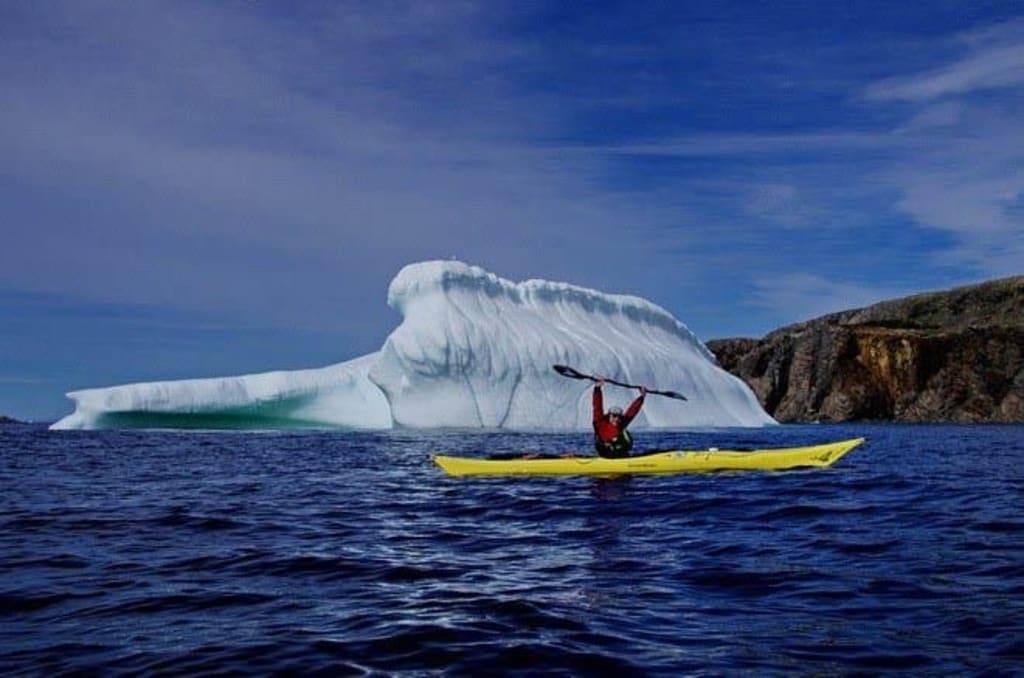5 Facts About The Iceberg Alley
Iceberg Alley is an outstanding location for viewing drifting natural ice sculptures.

It's a supernatural experience to stand on a rocky shore and watch a gigantic iceberg drift slowly. The huge ice blocks date back about 10,000 years. This is exactly what locals and visitors along Iceberg Alley experience each year between late April and early June. The latest projections, by a team including Professor Grant Bigg and Jennifer Ross, predict an average iceberg year. WERR's control system model predicts a year of the average iceberg from 413±111 icebergs to 48°N by August 2022.
Iceberg Alley refers to the waters of the Atlantic Ocean along the coastline of Newfoundland and Labrador at the eastern tip of North America. Here are 5 compelling facts about this beautiful place.
1. Icebergs detach from Greenland glaciers and move southward.
The arrival of spring signifies the meltdown of ancient glaciers in the North Atlantic. As time warms, gigantic stretches of frozen water break away from the ice shelves and glaciers of Greenland. They then start a trip south along the Iceberg Alley that lasts for months from the moment they calve breaking away from the glacier until they melt completely into the sea. The icebergs, only travel at an average of 0.4 miles per hour, or up to 10 miles a day, but their speeds depend on many factors such as ocean currents, wind, and waves.
2. Approximately 400 to 800 icebergs pass Iceberg Alley annually.
Every spring, hundreds of icebergs slowly cross the iceberg alley. They range in size from small chunks called bergy bits and growlers to colossal structures that loom over small villages. In 2017, a giant iceberg measuring 150 feet tall went aground near the Newfoundland village of Ferryland, dwarfing all of the homes nearby and making headlines around the world.
3. Iceberg Alley is where the Titanic drowned.
The term "tip of the iceberg" is true because only a small part of an iceberg is visible over the water. The saying is familiar to anyone familiar with the history of one of the most famous sea catastrophes in history. This was in the waters of Iceberg Alley where the unfortunate Titanic collided with an undetected berg. After the ship sank in 1912, Canada, the United States, and with 12 other countries formed the International Ice Patrol to warn vessels of any large, frozen obstacles floating around the North Atlantic.
4. The icebergs of the iceberg alley have six different shapes.
As icebergs melt, they assume many different shapes, creating beautiful shapes and bows until the last pieces fade into the sea. Their various appearances can be categorized into one of six shapes: Blocks are square-shaped icebergs with steep sides and a flat top, while wedges have a flat surface that slopes from one end to the other. The pinnacles are pinnacles with, as the name implies, a top or top shape, often called a pyramid. U-shaped iceberg wedges with a flat section at water level in the middle with two pinnacles or columns on each side. The domes are slightly rounded and tubular.
5. Icebergs create dynamic underwater ecosystems in an iceberg alley.
Iceberg Alley is a rich ecosystem that nourishes whales, seals and other marine species. It's because icebergs break away from the bottom of a glacier, bringing soil and other terrestrial nutrients to the sea. The same occurs when large icebergs scratch the bottom of the ocean, releasing the rich nutrients that are trapped on the seabed. When they melt, the freshwater creates small currents in the salt ocean, which provide excellent conditions for zooplankton and phytoplankton. The presence of this plankton makes the waters of Iceberg Alley foraging areas for many aquatic animals.
Enjoyed the story? Support the Creator.
Subscribe for free to receive all their stories in your feed. You could also pledge your support or give them a one-off tip, letting them know you appreciate their work.






Comments
There are no comments for this story
Be the first to respond and start the conversation.